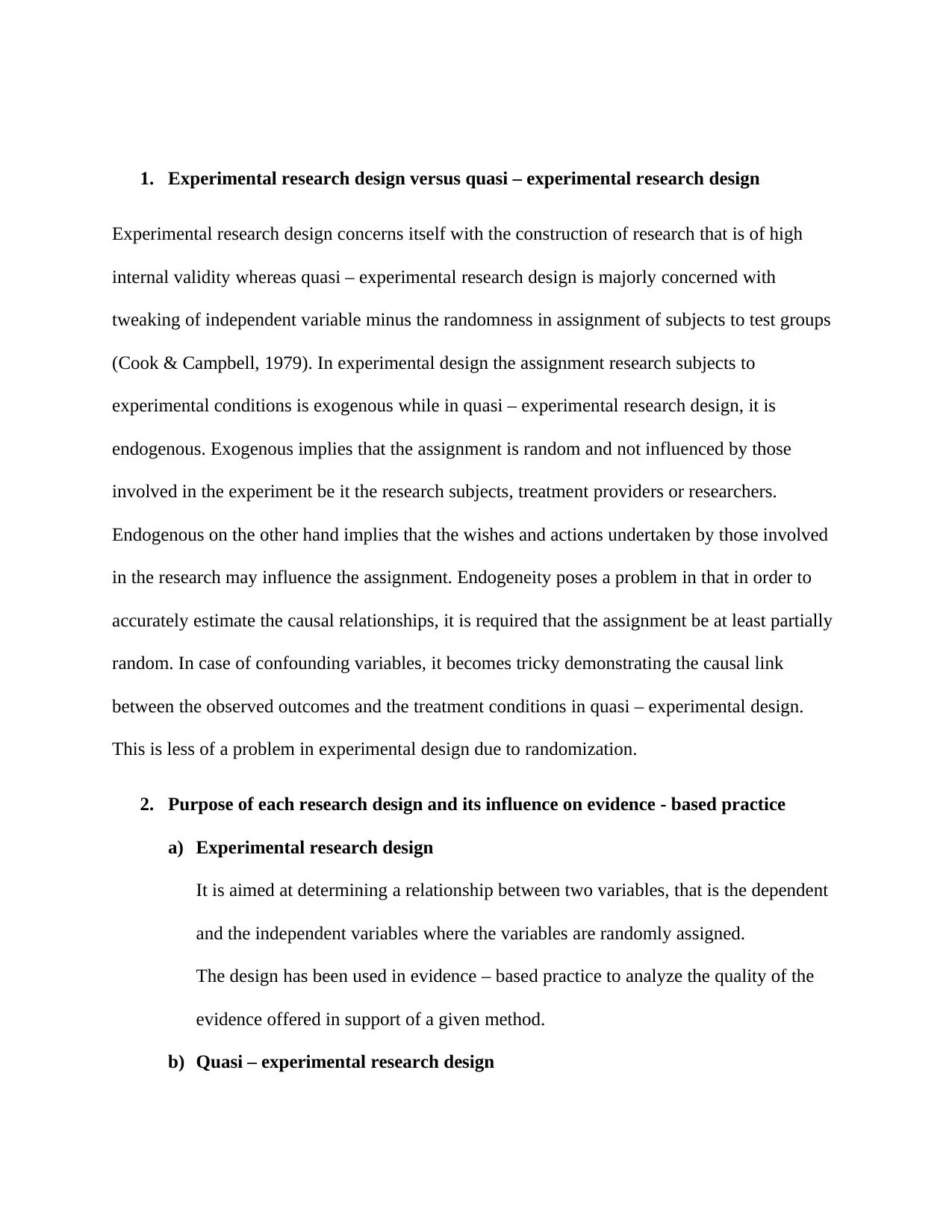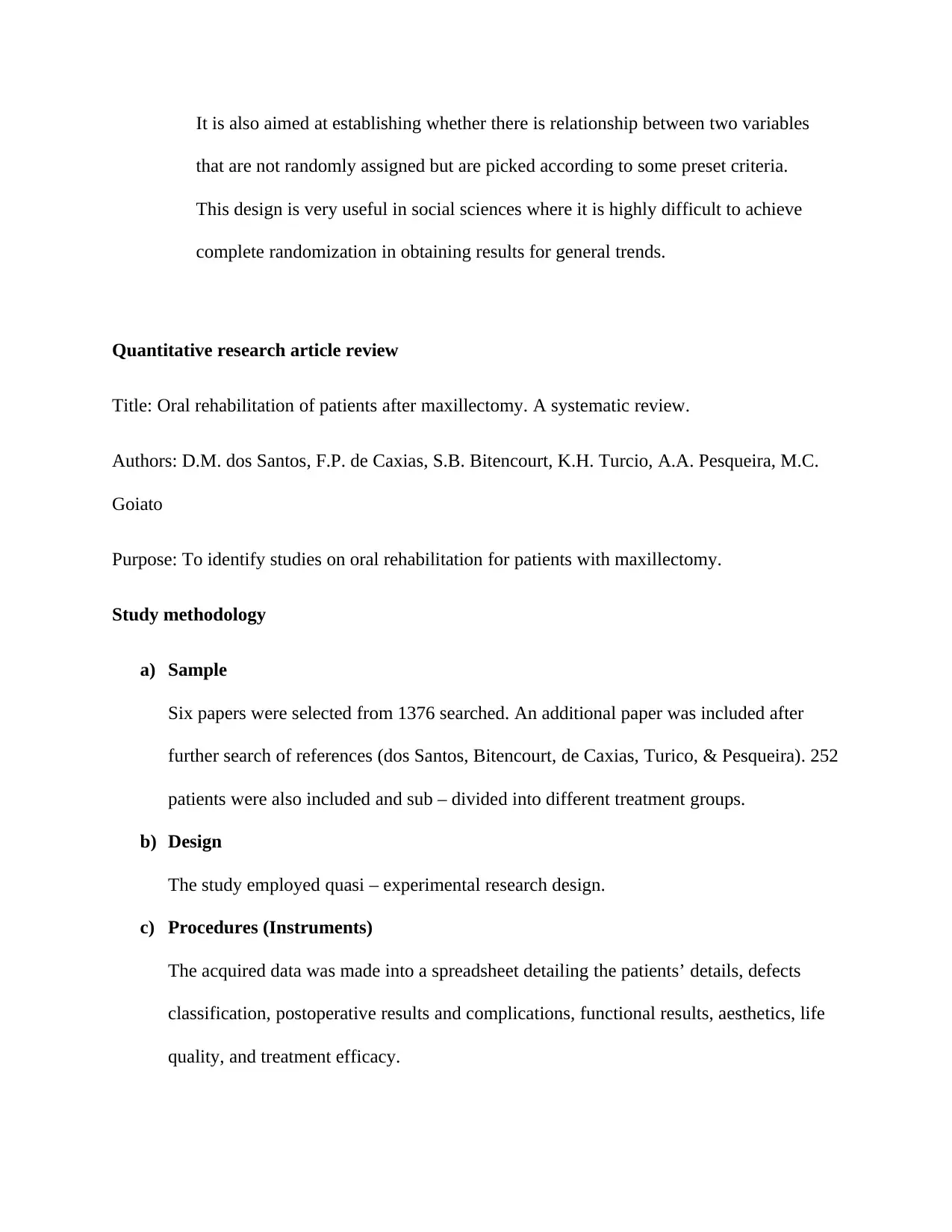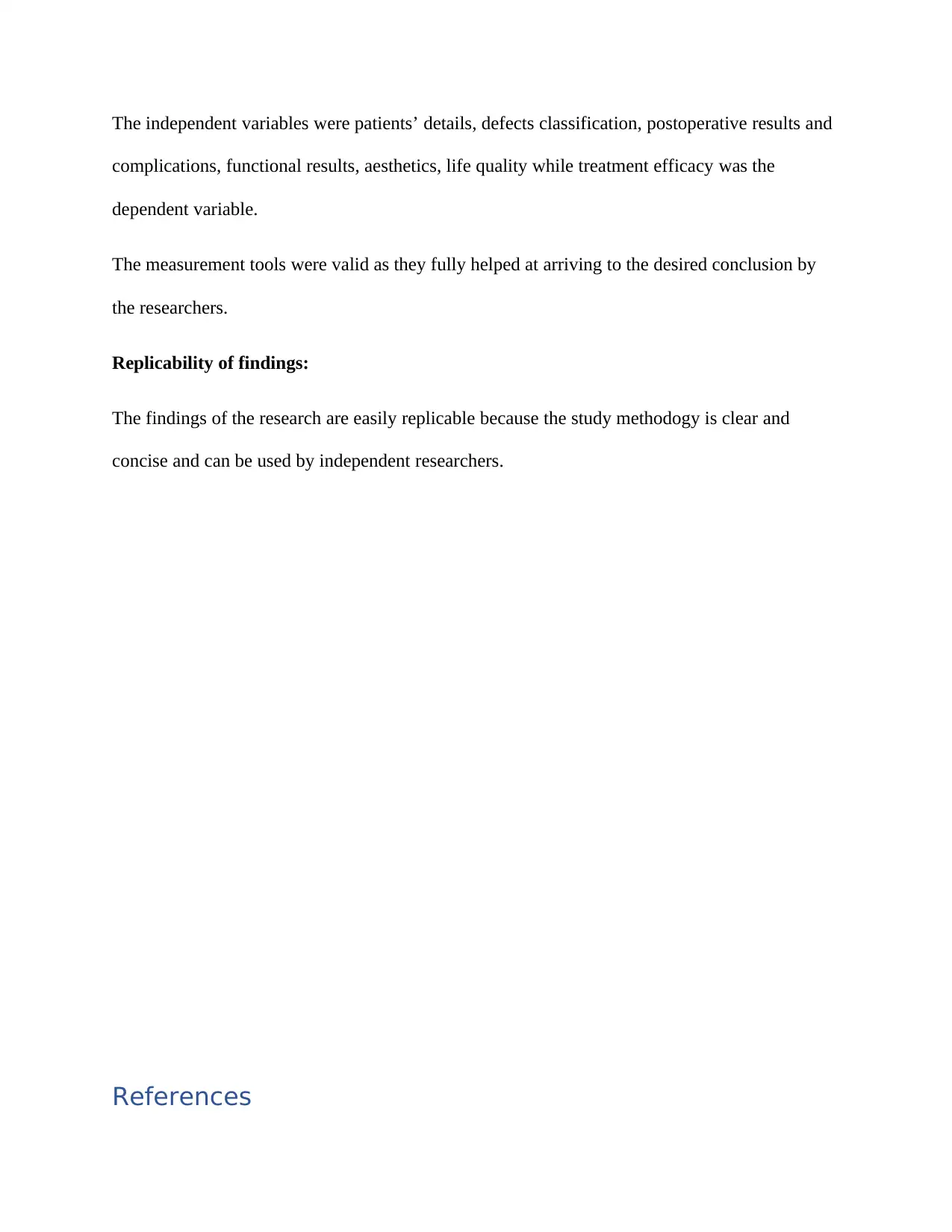Analysis of Experimental and Quasi-Experimental Research Designs
VerifiedAdded on 2022/08/13
|4
|622
|15
Report
AI Summary
This report explores the differences between experimental and quasi-experimental research designs. Experimental design emphasizes high internal validity through random assignment, while quasi-experimental design focuses on manipulating variables without complete randomization. The report highlights the purpose of each design, including their application in evidence-based practice. A case study of an oral rehabilitation study after maxillectomy is provided, which used a quasi-experimental design. The study, which involved 252 patients, examined treatment efficacy. The methodology, including data collection and analysis, is described, along with the replicability of the findings. The report concludes by emphasizing the importance of understanding these research designs for effective research and evidence-based practice in healthcare and other related fields.
1 out of 4






![[object Object]](/_next/static/media/star-bottom.7253800d.svg)